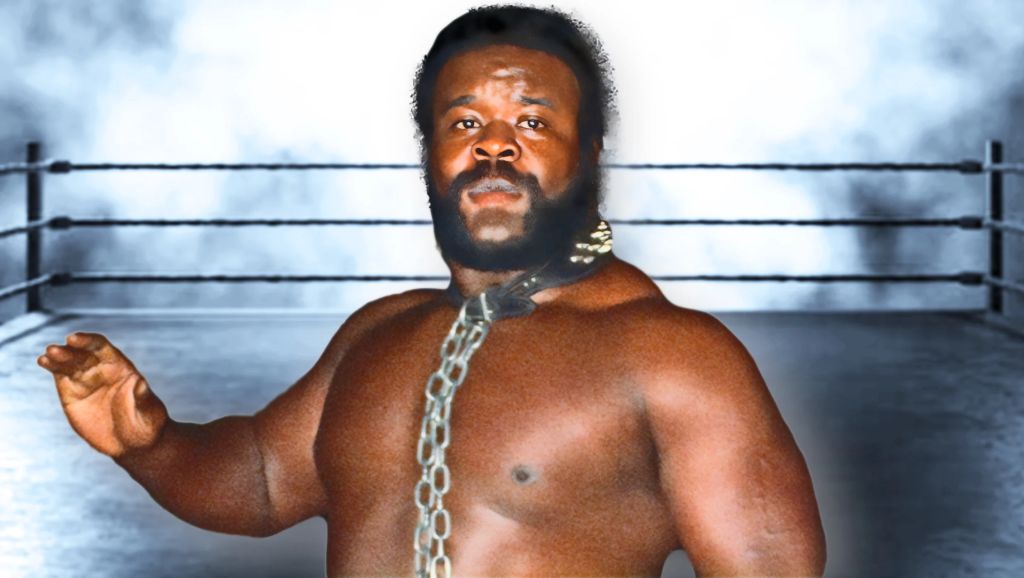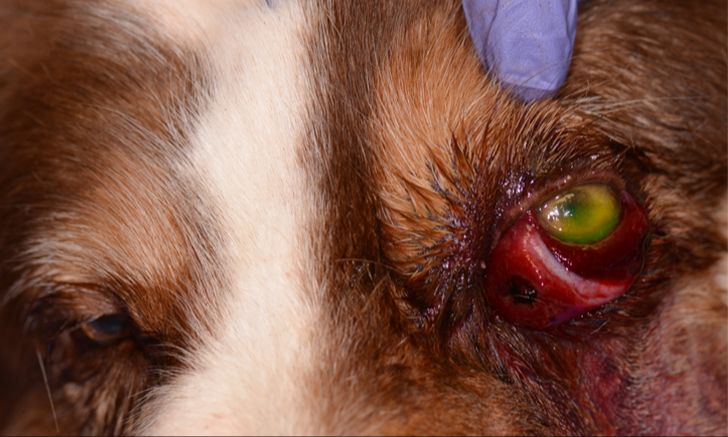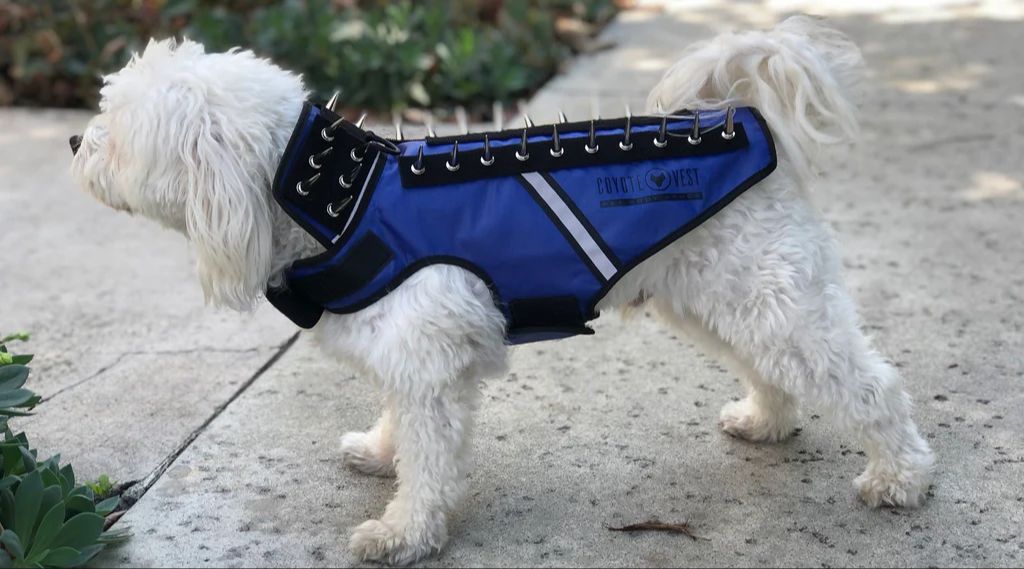Introducing the Junkyard Dog
The Junkyard Dog, known for his headbutting move and trademark dog collar and chain, was the wrestling persona of Sylvester Ritter (1952-1998), a charismatic and wildly popular professional wrestler in the 1980s.[1] Ritter started his career in 1977 in the Louisiana and Oklahoma territories of Mid-South Wrestling, where he began developing his “Junkyard Dog” character – a tough, streetwise dogcatcher who wore a long dog chain around his neck and would headbutt his opponents into submission. The Junkyard Dog quickly caught on with audiences, thanks to Ritter’s natural magnetism, and the chants of “Go Dog Go!” became a trademark of his matches. By the early 80s, the Junkyard Dog was one of the biggest stars not only in Mid-South, but across all wrestling territories, paving the way for other black wrestlers like Butch Reed and Ernie Ladd to find success in a sport dominated by white wrestlers.
[1] https://en.wikipedia.org/wiki/Junkyard_Dog
His Wrestling Career

The Junkyard Dog, real name Sylvester Ritter, had a successful wrestling career in the 1980s. He wrestled for various promotions including Mid-South Wrestling, the World Wrestling Federation (WWF), and World Class Championship Wrestling.
Some of his key matches and feuds were against “Macho Man” Randy Savage, whom he defeated in the finals of The Wrestling Classic tournament in 1985 (https://www.wwe.com/videos/junkyard-dog-vs-macho-man-randy-savage-the-wrestling-classic-tournament-final-match). He also feuded with Ric Flair and Ted DiBiase during his time in Mid-South Wrestling.
The Junkyard Dog held numerous championships. He was a three-time Mid-South North American Heavyweight Champion, the first black wrestler to hold that title. He also held the Mid-South Louisiana Heavyweight Championship twice and the WWF Intercontinental Championship once in 1986.
The Blinding Incident
In 1980, Junkyard Dog was involved in a storyline with the wrestling faction The Fabulous Freebirds in Mid-South Wrestling. During a match, Freebirds members Michael “P.S.” Hayes and Terry “Bam Bam” Gordy threw a substance into Junkyard Dog’s eyes that kayfabe blinded him.

According to the Wikipedia article on Junkyard Dog, the substance used was Freebird hair cream mixed with hydrogen peroxide to create the look of blindness. The storyline was meant to generate heat and build a feud between Junkyard Dog and the Freebirds.
The blinding incident took place on July 22, 1980 in the Sam Houston Coliseum in Houston, Texas during a tag team match. Footage shows Hayes distracting the referee while Gordy reaches into his tights and throws the hair cream mixture into Junkyard Dog’s eyes. Junkyard Dog instantly grabs his eyes in pain and stumbles around the ring blindly.
This infamous incident was a pivotal angle in Junkyard Dog’s career. It led to many rematches and built excitement around Junkyard Dog eventually overcoming the dastardly actions of the Freebirds and regaining his vision.
His Vision After the Incident
The extent of Junkyard Dog’s vision loss after the incident was significant. According to eyewitness accounts, he was effectively blind in his right eye after being struck with the icy drink (https://www.reddit.com/r/SquaredCircle/comments/cg5x5s/the_blinding_of_the_junkyard_dog_by_michael_ps/). The blunt force trauma caused severe damage to his cornea and retina, leaving him unable to see out of that eye.

Over time, Junkyard Dog did experience some recovery of vision, but it was limited. Years later, his vision remained impaired, requiring thick glasses to correct the vision in his right eye (https://www.thesportster.com/dark-side-of-the-ring-junkyard-dogs-blind-angle-almost-got-freebirds-shot/). While he regained some sight, he never fully recovered from the injury. The incident left him partially blind for the remainder of his career and life.
How it Impacted His Career
In his most infamous wrestling moment, Sylvester Ritter’s eyes were blinded by hair removal cream thrown by the Fabulous Freebirds during a match in 1983 according to Tragic Details About Junkyard Dog – Looper. JYD claimed after the incident that he would never be able to wrestle again or see properly due to the injuries to his eyes. This effectively ended his successful wrestling career in the prime of his life.
The blinding incident forced Junkyard Dog into early retirement in 1988 at the age of 35 according to Junkyard Dog – Wikipedia. Though he made brief comebacks, the lasting damage to his eyes from the hair cream attack prevented him from continuing to wrestle at the top level. The tragic blinding brought a premature end to a Hall of Fame career.
Life After Wrestling
After retiring from professional wrestling in 1993, Junkyard Dog pursued other interests like acting and motivational speaking. He landed several small roles in movies and TV shows, including a part as a wrestler named Bear in the 1998 film The First Family. His most notable acting role was as Queen Kimba’s aide in WCW’s Blacktop Bully movie that same year (https://en.wikipedia.org/wiki/Junkyard_Dog).
Junkyard Dog also spent time as a motivational speaker, using his celebrity status to inspire students and share his story. He spoke at schools, churches, conventions, and other events about setting goals, working hard, and overcoming adversity. His upbeat, passionate speaking style connected with audiences, and he relished the chance to positively impact young people (https://www.thesportster.com/wwe-tragic-death-of-wrestler-known-as-junkyard-dog-explained/). Though no longer wrestling, Junkyard Dog found fulfillment in these new pursuits.
His Legacy
Junkyard Dog had a tremendous influence on professional wrestling and left behind an impressive legacy. Many cite him as being one of the first major African American wrestling stars in the South during a time of heavy racism and segregation (https://bleacherreport.com/articles/2361316-full-career-retrospective-and-greatest-moments-for-junkyard-dog). He helped break down color barriers and paved the way for future black wrestlers. Junkyard Dog was known for his charisma, connection with crowds, and unique style and persona in the ring.
After his tragic early death in a car accident in 1998 at age 45, Junkyard Dog was posthumously inducted into the WWE Hall of Fame in 2004. This honored his accomplishments and contributions to wrestling history (https://www.thesportster.com/wwe-tragic-death-of-wrestler-known-as-junkyard-dog-explained/). Several tributes and memorials took place after his passing, including a ten-bell salute ceremony on an episode of WWE Raw. Junkyard Dog’s legacy lives on through his influence, with many wrestlers still paying homage to him today.
Other Wrestlers With Vision Issues
There are other pro wrestlers besides the Junkyard Dog who have faced vision problems and blindness during their careers. Some examples include:
Rey Mysterio is a famous luchador wrestler who has battled with deteriorating vision and had to wear protective contact lenses while performing in the ring. In 2019, it was reported that Mysterio was nearly completely blind in his left eye but continued to wrestle despite the vision impairment.
Bryan “Daniel Bryan” Danielson developed vision issues due to a rare condition called Leber’s Hereditary Optic Neuropathy (LHON) which can lead to sudden blindness. As reported by CBS News, the high school wrestler started rapidly losing his eyesight at age 14 but overcame the condition to become a WWE champion.
Vader was accidentally blinded in one eye after Stan Hansen hit him harder than expected during a match in Japan in 1990. One source describes it as “A Lack of Vision” when the legally blind Hansen collided with Vader’s eye, detaching his retina.
Preventing Wrestling Injuries
Injuries, including eye injuries, are an unfortunate risk in wrestling [1]. However, there are steps wrestlers can take to reduce their risk of sustaining eye trauma.
Using protective gear like headgear with a face shield is crucial for protecting the eyes during matches and practice [2]. Headgear significantly reduces the chances of getting poked in the eye or scraped across the face. Wrestlers should always opt for gear that fits properly and covers the eyes.

Maintaining fingernails and keeping them trimmed short is also important, as scratching is a common cause of minor eye injuries like corneal abrasions. Taping wrists and hands can add an extra barrier as well.
Coaches and training partners need to promote an environment of safe technique and controlled sparring. Drilling moves slowly and avoiding overly aggressive live wrestling early on reduces reckless collisions that may lead to eye trauma.
Getting a thorough eye exam can identify any vision issues or conditions that may predispose a wrestler to injury. Protective contact lenses or sports goggles might be recommended in some cases [3].
While eye injuries can never be fully prevented in such an intense, high-impact sport, taking proper precautions goes a long way in allowing wrestlers to compete safely.
The Importance of Vision Care
Vision is critically important for athletes and should not be overlooked. Regular eye exams and vision assessments are essential to make sure athletes’ eyes are healthy and they have the visual abilities needed for their sport. According to Opticare Vision, “Sports vision training can help athletes improve their ability to focus on visual information. This is important for athletes who need to be able to quickly locate and track objects while playing their sport.”
It’s recommended that athletes get a comprehensive eye exam annually to check for any vision problems that could affect performance. An optometrist can evaluate visual acuity, eye alignment, eye movements, depth perception, color vision, peripheral vision and more. They can prescribe corrective eyewear if needed. Ongoing vision therapy may also help enhance visual skills.
Ensuring proper protective eyewear is worn during sports is also a vital part of vision safety. Protective sports goggles and helmets with face masks can help prevent eye injuries and trauma. As Ojas Eye Hospital notes, “Eyes are essential for playing any sports. Not only it is essential, but in certain cases, the performance of the player depends upon his vision.” Protecting athletes’ vision should be a top priority.
With routine eye care and vision precautions, athletes can optimize their visual abilities, prevent injuries, and perform at their best.